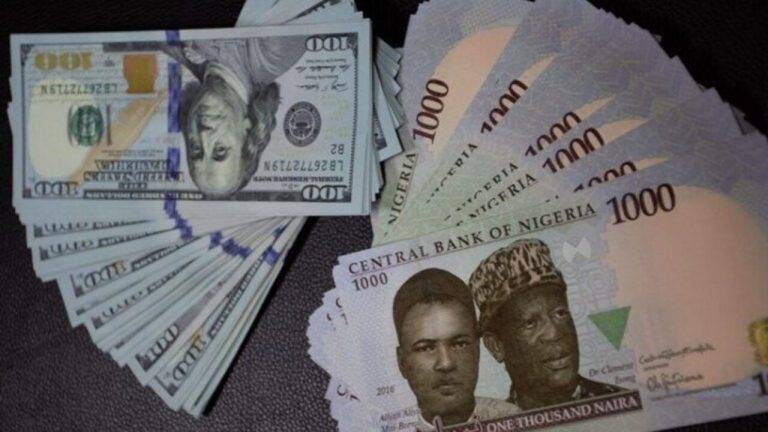The exchange rate between the Naira and the dollar on the official NAFEM window dropped to N1,520.4/$1 on Tuesday, May 14, 2024. This marks a 2.78% depreciation from the previous day’s close of N1,478.11/$1, signalling the Naira’s weakest position in over six weeks.
This downturn is notable as it breaches the N1,500/$1 level for the first time since March 19, 2024, indicating ongoing volatility in the forex market. Over the last week, the Naira has lost approximately 11% of its value in the official market, highlighting the challenges facing Nigeria’s currency stabilization efforts.
Tuesday’s trading dynamics further illustrate the erratic nature of the forex market. The intra-day high reached N1,568/$1, and the intra-day low dipped to N1,350/$1, suggesting temporary peaks in sell-offs and potential buy-back or corrective movements within the same session.
FX Supply Crashes by 41%
The significant depreciation of the Naira can partly be attributed to a noticeable decline in dollar liquidity in the official market. On Tuesday, the daily turnover in the forex market witnessed a sharp 41% drop, closing at $128.76 million compared to $217.64 million recorded the previous day. This reflects the unpredictable fluctuations in foreign exchange supply to the official market.
Despite these challenges, Nigeria’s foreign exchange reserves have shown signs of resilience, increasing by $262 million since April 19, 2024. If strategically managed, this provides a cushion that might help stabilize the currency.
The increase coincided with the Governor of the Central Bank of Nigeria (CBN), Yemi Cardoso, ‘s statement that the apex bank is not trying to defend the Naira following a one-month dip streak in the country’s reserves.
Parallel Market Pressure
On Tuesday, the Naira also exhibited volatility in the parallel market, trading between N1,520/$1 and N1,550/$1 in major cities like Lagos and Abuja. This marks a decline from the earlier rate of N1,475/$1 reported in the unofficial market at the start of the week.
The gap between the official and parallel market rates has contracted somewhat, attributed to the CBN’s adoption of a more market-oriented approach to price discovery. However, anomalies persist, with the official market sometimes posting weaker rates than its parallel counterpart.
The latest depreciation trends suggest that the parallel market has experienced a sharper decline relative to the official rates, driven by heightened demand from importers and Nigerian travellers needing foreign exchange. Customers at commercial banks report hurdles in purchasing forex directly over the counter, driving many to the parallel market and exacerbating pressure on the exchange rate.











